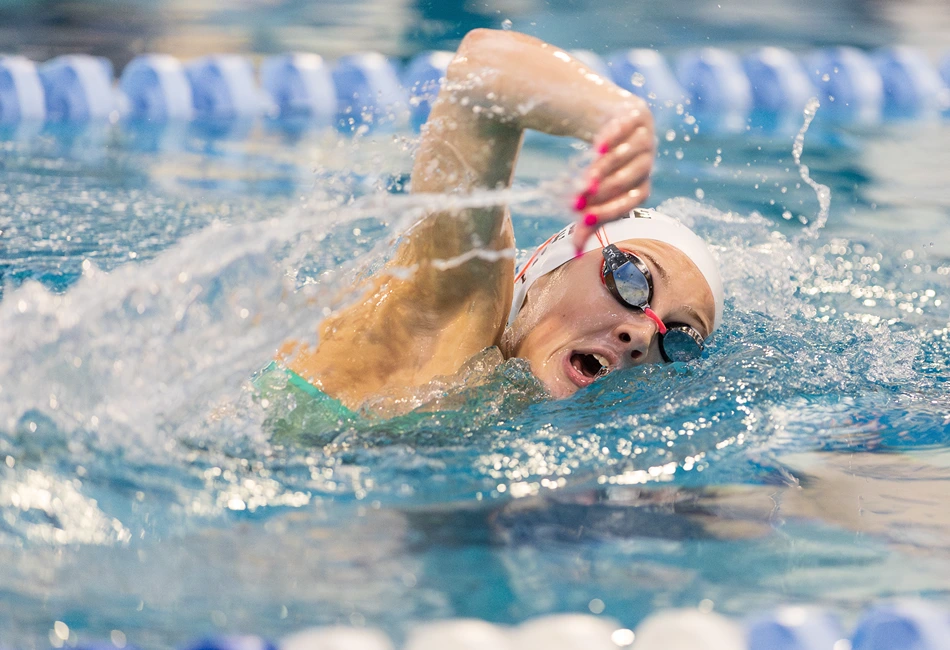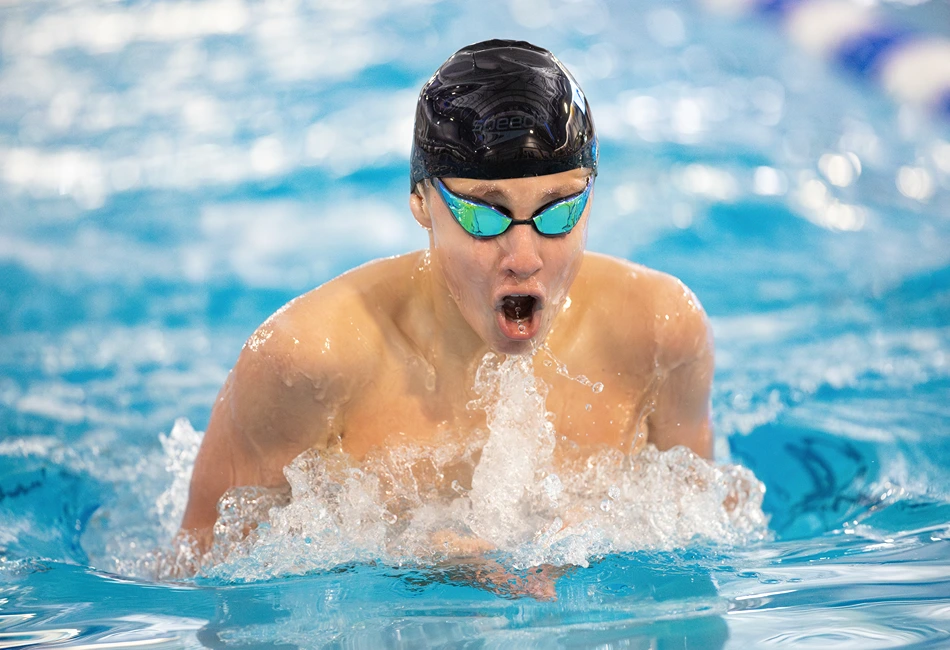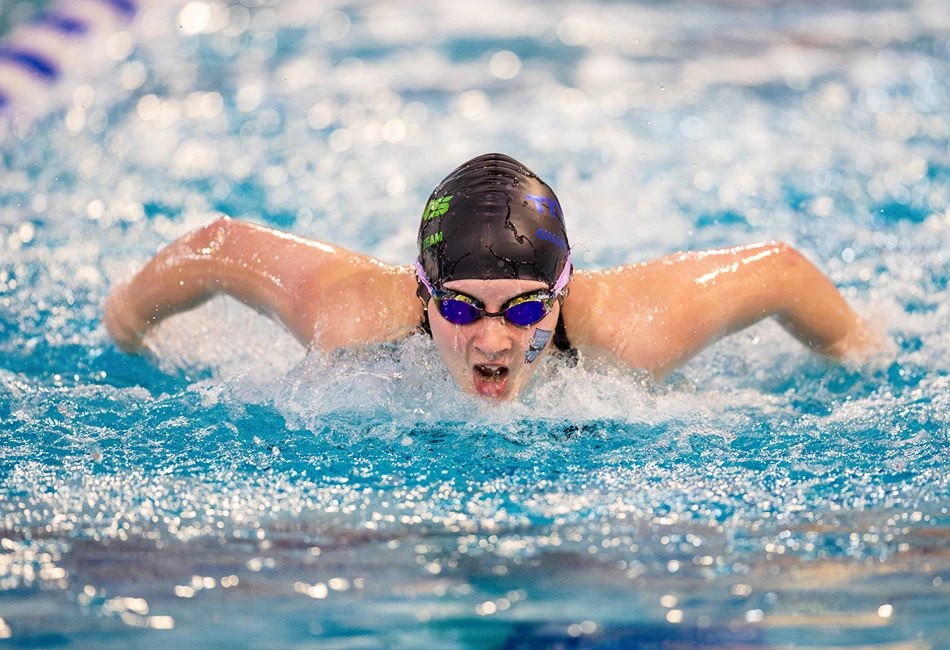Swimming stays steady in both viewership and participation
Swimming remains one of the top five most-followed sports among the Olympic powerhouses in the United States. Participation in competitive swimming has steadily grown throughout 2024, with USA Swimming reporting a 1% increase over the year.
Swim clubs across the nation are maintaining steady participation numbers among most age groups. Teams like the TAC Titans in North Carolina have grown by 400 swimmers since 2021, expanding their roster to approximately 1,300 participants. Even smaller clubs, such as the Aquajets in Minnesota, have sustained a consistent membership of 350-plus swimmers over the years.

Learn-to-swim programs in the U.S.
The secret? A gradual transition into the sport through introductory programs. These aim to peak potential swimmers’ attention by teaching them the must-knows without the pressure to compete. As they become stronger swimmers, they have the opportunity to phase into a competitive team.
“Our Block Party pilot program to create short, family-friendly competition to increase access to the sport and help swimmers learn-to-compete and then love-to-compete is gaining traction, and we think it is a great fit for building participation in the sport,” said Nikki Warner, director of communications at USA Swimming.
These programs bridge the gap between novice and competitive swimmers, giving children a clearer understanding of what to expect when joining a team. Not only do they attract more potential competitors, but they also help retain those who choose to pursue swimming seriously.
The swimming world post-Covid
One of the biggest hurdles for swimming has been recovering from COVID-19. Despite their general consistency with their overall number of swimmers, smaller teams, such as the Aquajets, have noticed a dip in the 11–13 age group—children who would have just begun their swimming journey when the pandemic hit.
“Covid really cratered that age group,” said Leah Foreman-Keiser, assistant head coach of the Aquajets. “Those kids who were either just getting into swimming or would have gotten into swimming all of a sudden can’t.”
According to Coach Foreman-Keiser, keeping swimmers engaged past the age of 12 is particularly challenging. Around this age, they reach a threshold where progress slows, and it takes more effort to drop time, leading many to leave the sport altogether. This poses an additional challenge in increasing participation within this age group. Coach Foreman-Keiser has expressed concerns about young swimmers’ willingness to persevere through this stage.
“Now it’s not until [age] thirteen or fourteen where you can get kids past that threshold that they are going to stick with it,” said Foreman-Keiser. “I don’t know if that stickiness is there as much anymore, the going gets tough and they’re like, ‘I’m going to go play video games.’”
To address this challenge, coaches have focused on creating an encouraging environment where swimmers can learn to push past frustration. Fortunately, this approach appears to be working, as the Aquajets have rebounded, with all other age groups maintaining healthy participation numbers.

Prioritizing swimmer’s mental health
Since swimming is a time-based sport, the difference between success and failure can be found in a fraction of a second, causing many to develop anxiety before a race. Olympic athlete Michael Phelps has documented his struggle with depression and suicidality in his 2020 documentary “The Weight of Gold”. The more young people join the sport, the more the community is recognizing that mental health is equally important as physical health.
Swimming remains at the forefront of advocating for athletes’ mental well-being, both in and out of the pool. Coaches actively support their swimmers by providing essential resources to help them navigate challenges. One of the most rewarding tools they have implemented has been a mental health professional who works with their teams.
“Awareness of the mental aspects of things has been at the forefront of our sport to the point that we have a sports psychologist that works with our kids,” said Bruce Marchionda, USA National Team head swimming coach for TAC TITANS.
Mental health professionals not only support athletes as they progress in the sport but also help them navigate challenges in their personal lives. Coach Foreman-Keiser spoke about the pressure children face from homework, extracurriculars and phone addiction, as well as the obstacles these create during practice.
“With the anxiety that kids have now, how do we keep that out of the pool?” asked Foreman-Keiser. “Being a kid is tough, especially nowadays with everything that they have access to at the touch of a button. It’s overwhelming.”
The cost of swimming in the United States
Swimming costs can vary greatly depending on the location. A premium membership with USA Swimming costs around $86 per year, but additional expenses for high-quality suits, goggles, and swimming caps can increase the overall price. Not to mention travel and meet fees—bringing the yearly total well over $1,000.
“It’s a very expensive sport to participate in and so financial assistance is something that needs to really develop more,” said Coach Marchionda. “We do have some financial assistance, but again, it can be more.”
The expensive nature of swimming creates a barrier for any potential participants who can’t afford to join a team. Even with local clubs’ efforts to provide financial aid, many aspiring swimmers still struggle to cover the costs of equipment, travel and competition fees, making the sport inaccessible to those with limited financial resources.
In the face of challenge, swimming in the United States remains a strong and steadily growing sport. From increasing participation in club teams to the success of learn-to-swim programs, efforts are being made to expand accessibility and nurture young talent. By prioritizing affordability, fostering resilience in young swimmers and supporting mental well-being, swimming will not only maintain its status as a top-tier sport but also create lasting opportunities for all who aspire to dive in.
By Kristen Cerney





